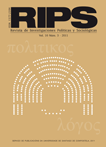Definiendo y teorizando el significado de comunidad de lugar en la era de la globalización
Contenido principal del artículo
Resumen
A pesar de tratarse de la típica palabra que, al igual que democracia, cultura o desarrollo, es fácilmente inteligible cuando es utilizada en el lenguaje cotidiano; la definición de comunidad en el seno de las ciencias sociales contempla algunas dificultades. El objetivo de este capítulo es el de hacer un breve recorrido por la evolución teórica de la palabra concepto “comunidad” en el discurso de la sociología, así como reflexionar sobre su significado en la era de la globalización e información. La conceptualización de comunidad o gemeinschaft de Tönnies como forma natural de relacionarse tuvo una enorme repercusión en el propio desarrollo de la disciplina. A medida que el flujo de interacciones entre los miembros de las comunidades tradicionales y el mundo externo se acentuó, no faltaron quienes quisieron dar por cerrado el viejo debate sobre industrialización y desintegración de la comunidad. Lejos de ser así, recientes desarrollos teóricos han supuesto una revitalización del concepto de comunidad y su capacidad para explicar procesos sociales contemporáneos. En este artículo propongo una definición de comunidad como lugar de identificación socio-espacial donde las interacciones se establecen, conscientemente, para, potencialmente, hacer frente a los efectos desintegradores de la globalización.
Palabras clave:
Detalles del artículo
Referencias
ÁLVARO, D. (2010). Los conceptos de “comunidad” y “sociedad” de Ferdinand Tönnies. Papeles Del CEIC. International Journal on Collective Identity Research, 1, 211. https://doi.org/10.1387/pceic.20878
ANDERSON, B. (1983). Imagined communities : reflections on the origin and spread of nationalism, Londres: Verso.
AUGÉ, M. (2012). Las redes sociales no harán la revolución. Entrevista a Marc Augé. Revista de Cultura Ñ. BAUMAN, Z. (2013). Liquid modernity, Cambridge: Polity Press.
BAUMAN, Z. (2009). Comunidad : en busca de seguridad en un mundo hostil / Zygmunt Bauman ; traducción de Jesús Alborés, Buenos Aires: Siglo XXI.
BHATTACHARYYA, J. (2004). Theorizing community development. Community Development, 34(2), 5-34.
BIALAKOWSKY, A. (2010). Comunidad y sentido en la teoría sociológica contemporánea: las propuestas de A. Giddens y J. Habermas Papeles del CEIC. International Journal on Collective Identity Research, 1, 1–30.
BOURDIEU, P. (1980). Le capital social: notes provisoires. Actes de la recherche en sciences sociales, 31(1), 2-3.
CASTELLS, M. (1997). The power of identity. The information age: Economy. Society and Culture, 2(3).
CASTELLS, M. (1999). La era de la información: economía, sociedad y cultura, Buenos Aires: Siglo XXI.
CASTELLS, M. (2012). Viewpoint: Manuel Castells on the rise of alternative economic cultures. Interview in BBC.
COHEN, A.P. (2013). The symbolic construction of community, Londres y Nueva York: Routledge.
COLEMAN, J.S. (1988). Social capital in the creation of human capital. American Journal of Sociology, (94), 95–120.
COOLEY, C.H. (1962) Social Organization: A Study of the Larger Mind, Nueva York: Schocken.
DENNIS, N., F. HENRIQUES y C. SLAUGHTER (1969). Coal is our life an analysis of a Yorkshire mining community. London, New York: Tavistock Publications.
FISCHER, C. S. (1982). To Dwell Among Friends: Personal Networks in Town and City. Chicago: University of Chicago Press.
FOUCAULT, M. (1979). Discipline & Punishment. Nueva York: Vintage Books.
GANS, H.J. (1962). The Urban Villagers: Group and Class in the Life of ItaliansAmericans. Nueva York: Free Press of Glencoe.
GIDDENS, A. (1991). Modernity and self-identity : self and society in the late modern age, Cambridge: Polity Press.
GONZÁLEZ, N. (2007). Bauman, identidad y comunidad. Espiral, 14(40), 179–198.
LÉVI-STRAUSS, C. (1987). Antropología estructural: mito, sociedad, humanidades. Buenos Aires: Siglo XXI.
LIGHT, D., S.L. KELLER y C.J. CALHOUN (1991). Sociología. Bogotá: McGraw-Hill.
LÓPEZ MELÉNDEZ T. (2012). De sociedad a comunidad: la teoría de la transición. Reeditor. Red de Publicación y Opinión Profesional.
MARCHIONI, M. (1999). Comunidad, participación y desarrollo (Vol. 27). Madrid: Editorial Popular.
MARINIS, P. de (2010). La comunidad según Max Weber: desde el tipo ideal de la Vergemeinschaftung hasta la comunidad de los combatientes. Papeles Del CEIC, 1, 1–36.
MERTON, R.K. (1934). Durkheim’s Division of Labor in Society. American Journal of Sociology, 40(3), 319–328. https://doi.org/10.1086/216745
MURPHY, J. (1989). Community and struggle: a sociological study of a village in the 1980s. Doctoral dissertation, University of Warwick.
PAHL, R.E. (1967). The rural-urban continuum: a reply to Eugenlupri. Sociologia Ruralis, 7(1), 21–29. https://doi.org/10.1111/j.1467-9523.1967.tb01043.x
PARSONS, T. (2013). The Social System. Londres: Routledge.
PÉREZ, A.M. (2005). Review of Bourdieu’s The bachelors’ ball: The crisis of peasant society in Bearn. Reis. Revista Española de Investigaciones Sociológicas, (109), 257–261.
PLASCENCIA, J. (2005). Tres visiones sobre capital social: Bourdieu, Coleman y Putnam. Acta Republicana: Política y Sociedad, 4(4), 21-36.
PUTNAM, R. D. (2000). Bowling Alone: America’s Declining Social Capital. In Culture and Politics (pp. 223–234). Palgrave Macmillan US. https://doi.org/10.1007/9781-349-62965-7_12
REDFIELD, R. (1947). The Folk Society. American Journal of Sociology, 52(4), 293– 308. https://doi.org/10.1086/220015
REZSOHAZY, R. (). (1988). El desarrollo comunitario: participar, programar, innovar. Narcea.
ROBINSON J.W. y G.P. GREEN (Eds.). (2011). Introduction to community development: Theory, practice, and service-learning. Los Ángeles: Sage.
SIMMEL, G. (2012). “The Metropolis and Mental Life,” 37–45. Londres: Routledge https://doi.org/10.4324/9780203103333-10
STACEY, M. (1969). The Myth of Community Studies. The British Journal of Sociology, 20(2), 134. https://doi.org/10.2307/588525
SUTTLES, G.D. (1968). The Social Order of the Slum: Ethnicity and Territory in the Inner City, Chicago: University of Chicago Press.
Tönnies, F. y C.P. LOOMIS (2002). Community and society. Mineola y Nueva York: Dover Publications.
Wirth, L. (2017). Urbanism as a way of life. In The City: Critical Essays in Human Geography (pp. 25–48). Taylor and Francis. https://doi.org/10.1086/217913
Zorbaugh, H. (2005). The natural areas of the city. The urban sociology reader, 82-88.






